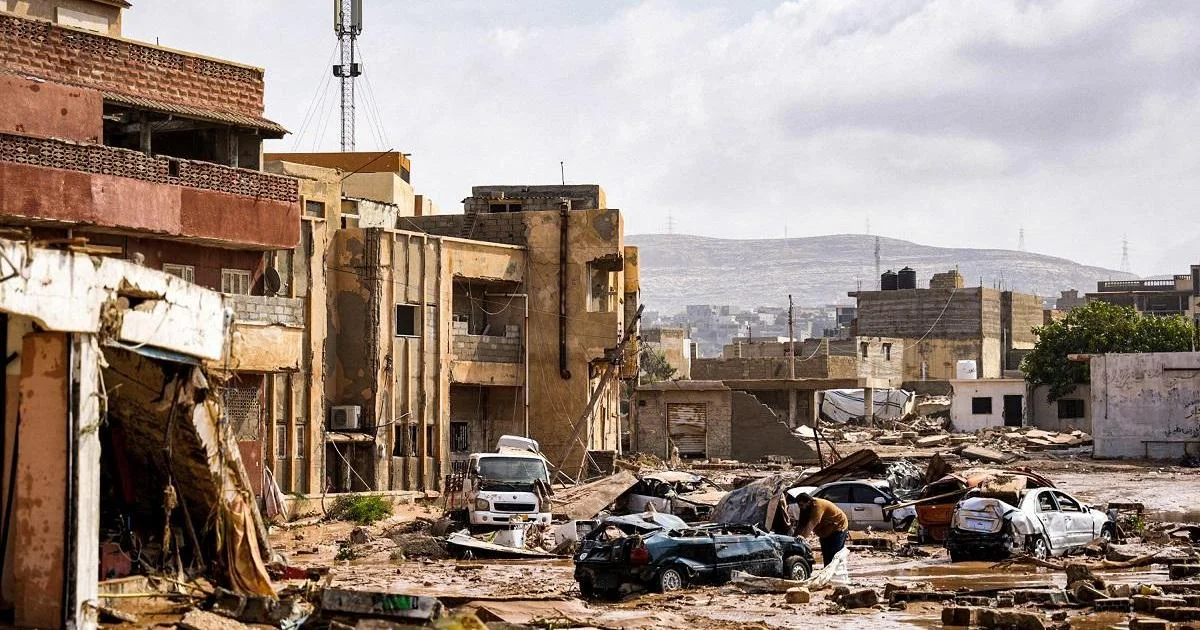In a heart-wrenching turn of events, Libya finds itself grappling with a devastating catastrophe as a result of the recent major flood triggered by Storm Daniel. The reported death toll is estimated to be a staggering 6,000, with the eastern city of Derna bearing the brunt of the disaster. Bodies shrouded in blankets now line the once-thriving streets, a haunting testament to the destruction wrought by nature’s fury.
News of this calamity unfolded through reports from Al Jazeera, painting a grim picture of the aftermath. Relief missions have been swiftly mobilized, with Turkey, Egypt, and the United Arab Emirates among the first nations to rush aid to this war-torn nation. The scale of the disaster has left approximately 10,000 individuals missing, according to international humanitarian workers.
The catastrophic flash flood struck the coastal city of Derna with an intensity likened to a tsunami, triggered by torrential rains accompanying Storm Daniel. Shocking imagery broadcasted on Al Masar network and circulated on social media captured the heart-wrenching scenes of a city left in ruins, with roads destroyed and buildings collapsed.
Satellite images vividly portrayed entire neighborhoods along the coast submerged under water, bearing witness to the scale of devastation that has unfolded. In response to the crisis, the United Nations has pledged $10 million in support for the survivors, including more than 30,000 people who have been rendered homeless in the wake of this disaster.
The floodwaters, akin to a relentless wall of destruction, swept away entire structures, vehicles, and their occupants. Tragically, many found themselves swept into the sea, and the grim reality of their fate unfolded as lifeless bodies washed up on beaches littered with debris and the wreckage of cars.
Amid the chaos, survivors have been grappling with unimaginable trauma as they dig through the mud-caked ruins of shattered buildings, recovering the bodies of victims. Scores of these bodies, wrapped in blankets, lay exposed in the open before finding their final resting places in mass graves.
While the confirmed death toll in Libya reached 2,300 by Tuesday, some regional officials have suggested that the actual figure could surpass twice that number. Tamer Ramadan, a representative of the International Federation of Red Cross and Red Crescent Societies, acknowledged the enormity of the tragedy, stating, “The death toll is huge and might reach thousands,” and highlighting that independent sources have indicated that the number of missing individuals has climbed to a staggering 10,000.
This heartbreaking disaster has befallen Libya, a nation still reeling from the tumultuous aftermath of the NATO-backed uprising in 2011, which led to the fall and demise of the longtime dictator Muammar Gaddafi. Libya remains divided between two rival governments, with one recognized by the UN, based in Tripoli, and another in the disaster-stricken eastern region.
The catastrophic flooding has also extended its grip to nearby areas of eastern Libya, where entire villages have been inundated, further exacerbating the rising death toll. Numerous nations, including Turkey, Algeria, France, Italy, Qatar, and Tunisia, have extended their assistance and deployed rescue teams to address this unprecedented catastrophe. The European Union has dispatched aid, including food, water tanks, tents, blankets, hospital facilities, and power generators.
Climate experts have underlined the link between this tragic disaster in Libya and a convergence of factors, including global warming and the nation’s political instability, coupled with inadequate investment in critical infrastructure. Mediterranean storms like Storm Daniel, which escalated to hurricane strength, are colloquially known as “medicanes” and can intensify due to warmer air absorbing more moisture. Such extreme weather events, intensified by climate change, tend to inflict the most profound toll on nations lacking robust infrastructure, early warning systems, and comprehensive emergency response capabilities.




